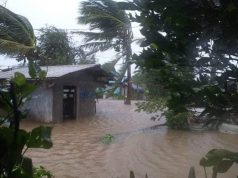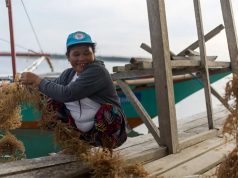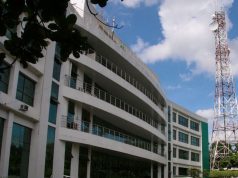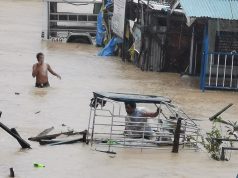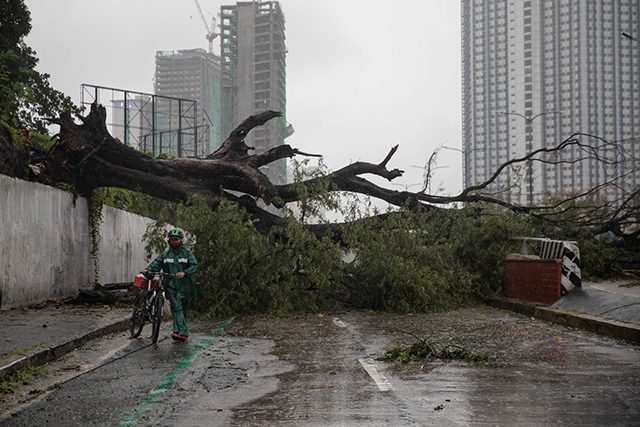
Some of the deadliest tropical cyclones in Philippine history were not classified as “typhoons.”
A science page brought up this topic in an infographic on November 2 following the onslaught of Severe Tropical Storm “Paeng” (international name: Nalgae).
“Paeng” battered the country from October 29 to 31 with heavy rains, thereby causing widespread flooding, landslides, power outages and other types of damage.
According to its latest report, the National Disaster Risk Reduction and Management Council (NDRRMC) said that the total number of affected persons is 2,418,249 across 17 regions in the Philippines.
The NDRRMC also logged 110 deaths due to the storm.
Amid the severity of its aftermath, “Paeng” only reached the “Severe Tropical Storm” classification of the state weather bureau.
When it was placed under this category, the tropical cyclone has maximum sustained winds of 95 kilometers per hour near the center and a gustiness of up to 130 km/h.
Some weather disturbances with the highest death tolls in Philippine history are also not typhoons.
Science Konek, a page dedicated to science-related news and information, posted an infographic about the names of these deadly cyclones and estimates of the number of deaths they caused, as follows:
- Tropical Storm Uring (1991) – more than 5,000 deaths
- Tropical Depression Winnie (2004) – more than 840 deaths
- Tropical Storm Ondoy (2009) – more than 460 deaths
- Tropical Storm Sendong (2011) – more than 1,200 deaths
Sa isang lugar na hindi handa at may kalikasang napabayaan, hindi na kailangang maging malakas ang isang bagyo upang ito ay magdulot ng matinding pinsala at kumitil ng maraming buhay.
Hanggang kailan tayo laging mabibigla? #PaengPH pic.twitter.com/84JqF7i2PY
— ScienceKonek (@sciencekonek) November 2, 2022
In its post, the page also made an emphasis about the still-glaring gaps in the country’s response to natural calamities despite bearing this much destruction over the years.
“Sa isang lugar na hindi handa at may kalikasang napabayaan, hindi na kailangang maging malakas ang isang bagyo upang ito ay magdulot ng matinding pinsala at kumitil ng maraming buhay,” Science Konek said.
“Hanggang kailan tayo laging mabibigla?” it added.
Paeng also joined two other notable cyclones that were categorized as “Super Typhoons” with high death rates in recent years.
The two Super Typhoons are as follows:
- Yolanda in 2013 – 6,300 deaths
- Odette in 2021 – 405 deaths
READ: Highest death tolls in Philippines: Cyclone ‘Paeng’ joins ‘Odette,’ ‘Yolanda’
Tropical depressions and storms
In PAGASA’s terminology, all storms that entered the Philippines are called “tropical cyclones.”
A tropical cyclone is a weather disturbance that occurs in the South Pacific and the Indian Ocean.
RELATED: Hurricane, typhoon, cyclone, storm: Which term should we use and when?
PAGASA classifies it according to its degree of intensity over warm tropical waters.
“They reach their greatest intensity while located over warm tropical waters and they begin to weaken as they move inland. The intensity of tropical cyclones varies, thus, we can classify them based upon their degree of intensity,” the state weather bureau said on its website.
A tropical depression is considered the weakest storm. A super typhoon is the strongest.
As of March 22, the following are the five categories of tropical cyclones based on growing intensities:
- Tropical Depression (TD)
- Tropical Storm (TS)
- Severe Tropical Storm (STS)
- Typhoon (TY)
- Super Typhoon (STY)




